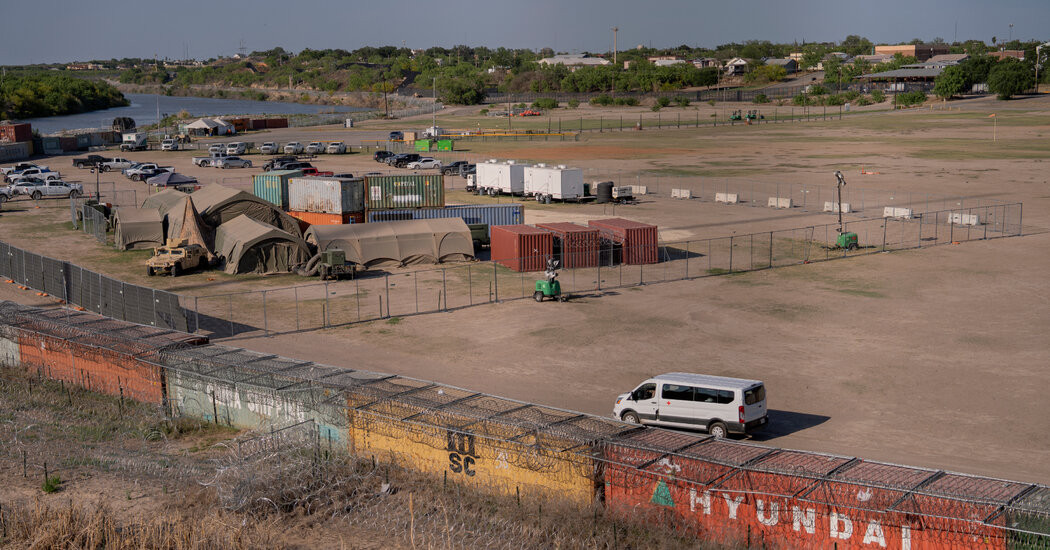

Shelby Park in Eagle Pass, Texas, was a backdrop for immigration fights during the Biden administration, but as the battle has moved inland some of the state’s troops have decamped.
On Monday morning, as temperatures rose toward sweltering, Dora Flores warily approached the entrance of a modest park in the border city of Eagle Pass, Texas, wanting to see for herself whether the armed guards and concertina wire that had kept residents out for over a year had actually disappeared.
“Is the park really open?” Ms. Flores, 73, wondered aloud. “This used to look like a jail.”
The sudden reopening of Shelby Park in Eagle Pass this month was another sign of the changing of the guard in Washington, D.C., being felt far, far beyond the Beltway.
In the last year, the large but humble tract along the U.S.-Mexican border had served as a backdrop for political fights. Republicans had used it to showcase the “invasion” of migrants. Democrats converged to decry what they saw as overly aggressive immigration tactics. In January 2024, Gov. Greg Abbott of Texas took it over in a show of force, castigating the border policies of President Joseph R. Biden Jr. while keeping people like Ms. Flores away.
In recent days, to the relief of local residents, Shelby Park — with its soccer and baseball fields and a boat ramp into the Rio Grande — has become just a park again, almost. Citing record-low crossings, the state of Texas has quietly abandoned the park gates, rolled up most of the concertina wire there and left only a small crew by the river.
“We’re happy the park has returned to the city,” said the town’s mayor, Rolando Salinas Jr.
The semblance of normalcy underscores how the battle over immigration has migrated inland, to street corners of university towns, Democratic-led cities far from the southern border and courtrooms all over the country — as well as one enormous prison in El Salvador.
During the height of the immigration surge under Mr. Biden — when more than 1,000 migrants were crossing a day — Eagle Pass became ground zero for testing Texas’ limit in enforcing immigration law.



